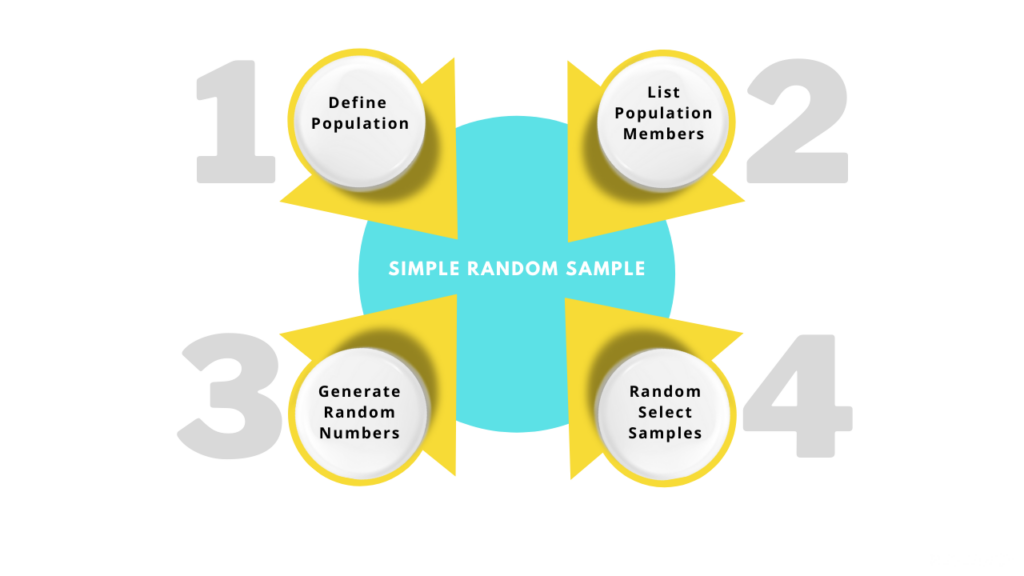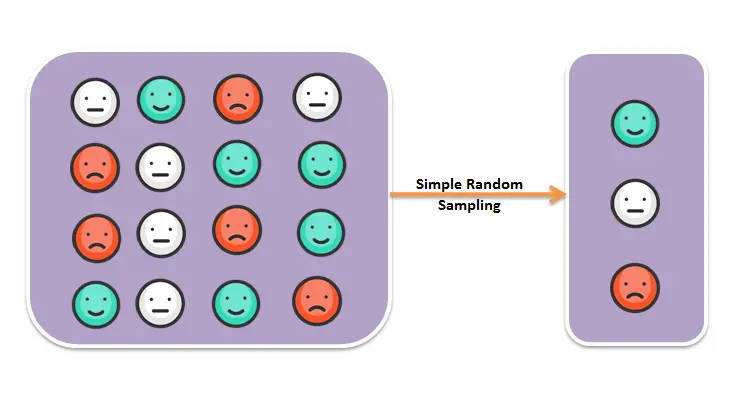
Explains cases that are average and normal. In purposive sampling personal judgment needs to be used to choose cases that help answer research questions or achieve research objectives.Īccording to the type of cases, purposive sampling can be divided into the following six categories :

For example, for a research analysing affects of personal tragedy such as family bereavement on performance of senior level managers the researcher may use his/her own judgment in order to choose senior level managers who could particulate in in-depth interviews.
#Simple random technique tv
However, it is important to specify that the TV reporter has to apply certain judgment when deciding who to stop on the street to ask questions otherwise it would be the case of random sampling technique.Īlternatively, purposive sampling method may prove to be effective when only limited numbers of people can serve as primary data sources due to the nature of research design and aims and objectives. TV reporters stopping certain individuals on the street in order to ask their opinions about certain political changes constitutes the most popular example of this sampling method. Researchers often believe that they can obtain a representative sample by using a sound judgment, which will result in saving time and money”. Purposive sampling is a non-probability sampling method and it occurs when “elements selected for the sample are chosen by the judgment of the researcher. For instance, if in our sample of 100 students we ended up with 60% boys and 40% girls, we could decrease the importance of the characteristics for boys and increase those of the girls to reflect our universe, which is 50/50.Purposive sampling (also known as judgment, selective or subjective sampling) is a sampling technique in which researcher relies on his or her own judgment when choosing members of population to participate in the study.

Some problems that arise from random sampling can be overcome by weighting the sample to reflect the population or universe. In such a case, precision can be increased through stratified sampling. Or perhaps, the population itself is not homogeneous and the sub-groups are very different in size. On the other hand, a current list of the whole population we are interested in ( sampling frame) may not be readily available. If the population is widely dispersed, it may be extremely costly to reach them. There are a number of potential problems with simple and systematic random sampling. In this sense, this technique is similar to cluster sampling, since the choice of the first unit will determine the remainder. 533, and then pick every 10th name thereafter to give us our sample of 100 (starting over with 0003 after reaching 0993). For instance, if the students in our school had numbers attached to their names ranging from 0001 to 1000, and we chose a random starting point, e.g. If a systematic pattern is introduced into random sampling, it is referred to as "systematic (random) sampling". However, technology has given us a number of other alternatives: many computer statistical packages, including SPSS, are capable of generating random numbers and some phone systems are capable of random digit dialling. It is possible to start at any point on the table and move in any direction to choose the numbers required for the sample size. Many statistics books include a table of random numbers, which are predetermined sets of random numbers.

This means that every student in the school as a 10% or 1 in 10 chance of being selected using this method.
/GettyImages-161545902-58ee47233df78cd3fc20cf31-5b8efd2fc9e77c002c849b7a.jpg)
Not only does each person have an equal chance of being selected, we can also easily calculate the probability of a given person being chosen, since we know the sample size (n) and the population (N) and it becomes a simple matter of division: You might put all their names in a drum and then pull 100 names out. Let us assume you had a school with a 1000 students, divided equally into boys and girls, and you wanted to select 100 of them for further study. A sampling procedure that assures that each element in the population has an equal chance of being selected is referred to as simple random sampling.


 0 kommentar(er)
0 kommentar(er)
